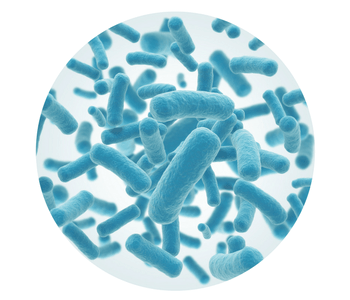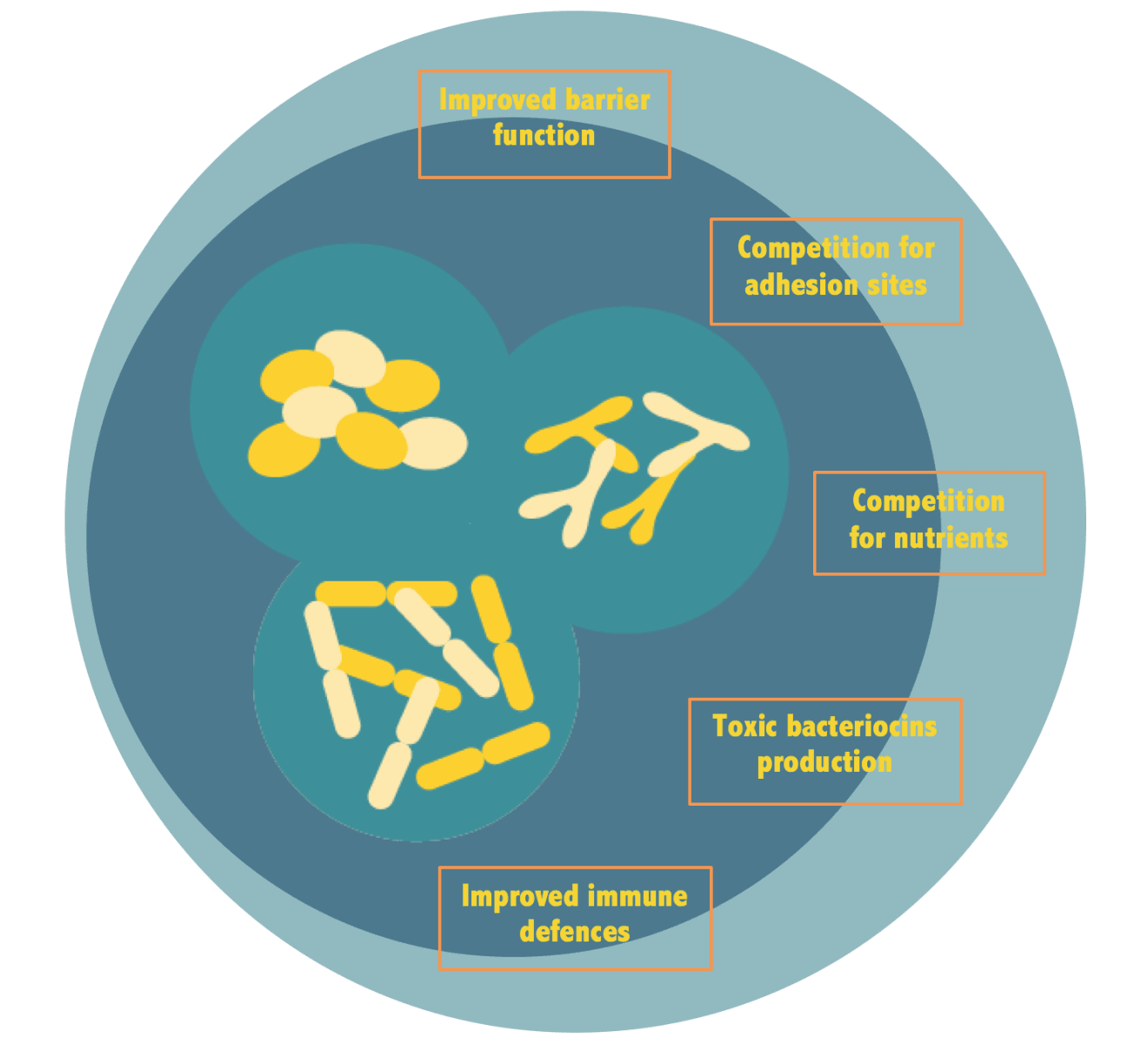What are probiotics?
Probiotics are defined as live microorganisms, which when administered in adequate amounts, confer a health benefit on the host.
They are mainly bacteria and yeasts that act on the good balance, integrity and diversity of the gut microbiota, particularly in the event of dysbiosis.
However, not all microorganisms can claim to be probiotics. To be considered as such, they must meet a number of quality requirements:
- Safety criteria: probiotics recognised as being safe for human consumption are included in the QPS (Qualified Presumption of Safety) list.
- Functional criteria: in addition to being live, supplied in adequate amounts and conferring a health benefit as indicated in their definition, probiotics must persist and multiply in the gut environment.
- Technological criteria: the viability and stability of probiotics must be guaranteed in the finished product.
Probiotics are predominantly represented by lactic bacteria, in other words bacteria that are capable of fermenting sugars into lactic acid. The main two types of lactic bacteria are Lactobacilli and Bifidobacteria. To a lesser extent, they also include yeasts such as Saccharomyces cerevisiae boulardii or spore-forming bacteria like Bacillus subtilis.
A number of benefits are attributed to probiotics: improved digestion, stimulation of the immune system, protection against infections, reduction in cholesterol, etc. However, not all probiotics have the same scope of activity: it is therefore very important to select the right probiotics based on the axis targeted.
What are probiotics?
Probiotics are defined as live microorganisms, which when administered in adequate amounts, confer a health benefit on the host.
They are mainly bacteria and yeasts that act on the good balance, integrity and diversity of the gut microbiota, particularly in the event of dysbiosis.
However, not all microorganisms can claim to be probiotics. To be considered as such, they must meet a number of quality requirements:
- Safety criteria: probiotics recognised as being safe for human consumption are included in the QPS (Qualified Presumption of Safety) list.
- Functional criteria: in addition to being live, supplied in adequate amounts and conferring a health benefit as indicated in their definition, probiotics must persist and multiply in the gut environment.
- Technological criteria: the viability and stability of probiotics must be guaranteed in the finished product.
Probiotics are predominantly represented by lactic bacteria, in other words bacteria that are capable of fermenting sugars into lactic acid. The main two types of lactic bacteria are Lactobacilli and Bifidobacteria. To a lesser extent, they also include yeasts such as Saccharomyces cerevisiae boulardiior spore-forming bacteria like Bacillus subtilis.
A number of benefits are attributed to probiotics: improved digestion, stimulation of the immune system, protection against infections, reduction in cholesterol, etc. However, not all probiotics have the same scope of activity: it is therefore very important to select the right probiotics based on the axis targeted.
More and more research…
Over the past 30 years, the number of publications has been growing exponentially.
Research into the gut microbiota:
Official scientific studies:
More and more research…
Over the past 30 years, the number of publications has been growing exponentially.
Research into the gut microbiota:
Official scientific studies:
A fragile balance
The gut microbiota is a balanced ecosystem that is constantly self-regulating. Although it is generally stable throughout our lifetime, a number of parameters can cause an imbalance, with various impacts on our health. This is known as dysbiosis, in contrast to normobiosis.
A number of factors can cause this loss of balance: infections, the environment, diet, an immune deficiency or certain medicines, such as antibiotics.
Various problems can develop as a result, such as digestive or intimate discomfort, immune disorders, etc.
To restore general well-being, food supplements containing probiotics help correct and maintain the balance of the body’s different microbiotas: gut, vagina, skin, mouth, etc.




